Email Marketing with Mailchimp
Mailchimp is an all-in-one marketing platform that helps you manage and talk to your clients, customers, and other interested parties. Our approach to marketing focuses on healthy contact management practices, beautifully designed campaigns, and powerful data analysis. We’re here to help you become an expert marketer. Ready to get started?
In this article, you’ll learn how to start using Mailchimp to create awesome campaigns, and we’ll provide some helpful resources to use as you work.
Things to know
Before you jump into the tasks ahead, here are a few helpful things to know.
- Mailchimp is a web-based application that works in most web browsers, which means you don’t need to download or install any software on your computer. To be sure Mailchimp works properly in your browser, you should enable cookies, pop-ups, and JavaScript.
- It’s important to note that when you create a Mailchimp account, you agree to comply with our Terms of Use.
- We offer a number of online resources to provide help and insights about our tools and features. Check out our searchable guides and tutorials if you want to learn how something works, or if you run into any trouble.
Task roadmap
Here’s an overview of the tasks we’ll cover in this article.
- Set up your account
- Set up your audience
- Customize your signup form
- Create a campaign
- View your campaign reports
- Review next steps
Set up your account
When you sign up for a Mailchimp account, you’ll enter your name and email address, and we’ll send you an activation email. When you receive the activation email, click the link to activate your account.
The next time you log in to our website, we’ll walk you through the rest of the setup steps. You’ll input profile details, such as your website and physical address, and connect your social media accounts. If you sell products online, you’ll have the option to connect your store to Mailchimp.
To learn more about account creation, read the article Create an Account.
Set up your audience
The foundation of great marketing is a clean, up-to-date record of your contacts, also known as your audience. When you create a Mailchimp account, we’ll use your setup details to automatically generate your audience for you. You can edit the default information for your audience if you need to, or immediately start adding contacts.
Mailchimp was designed so you should only need one audience. We have a number of helpful audience management tools so you can organize and separate contacts. If you do decide to create another audience, keep in mind that data isn’t shared across audiences, and contacts who are in more than one audience will count separately toward your subscriber limit.
Customize your signup form
If you don’t have any contacts yet, don’t worry! We’ll automatically generate a signup form for your audience, which you can post on your website or Facebook page, so you can start collecting contacts right away. Plus, we give you lots of options to customize the design of your signup form, so it’ll fit your brand.
To access customize your signup form, follow these steps.
- Click Audience.

- Click Audience dashboard.

- If you have more than one audience, click the Current audience drop-down and choose the one you want to work with.
- Click the Manage Audience drop-down and choose Signup forms.
- Select Form builder.
- Click the Forms and response emails drop-down menu, and choose which form you want to edit.

- Click the Design it tab.

- Click through the Page, Body, Forms, or Referral tabs to review the customization options. Use the fields and drop-down menus to make any changes you want to the styles, colors, and fields. We’ll save your changes automatically.
- When you’re done, click Save & Close.
For in-depth instructions, read the article How the Form Builder Works.
Create a campaign
Next, you’ll craft your first campaign. A campaign is a message that you share through email, ads, or other channels. In Mailchimp, most users start with a regular email campaign.
To get started on a regular email campaign, follow these steps.
- Click the Create icon.

- Click Email.

- Click Regular.

- Enter a campaign name and click Begin.

For detailed instructions on how to continue, check out Create a Regular Email Campaign.
Designing a campaign in Mailchimp can be fun, but also complex, because we offer a lot of customization options. Take some time to get used to the controls and always plan your campaigns before you start designing them. You’ll be an expert before you know it.
Design a Campaign in Mailchimp
View your campaign reports
You’ve clicked Send, but it’s not over yet! A key component of successful marketing is tracking audience engagement, so you can provide more of what your contacts want and less of what they don’t.
The next time you login to Mailchimp after sending an email campaign, you’ll see how many contacts opened, clicked, or unsubscribed from your recent campaigns, right on your Dashboard. Click Reports for more detailed information, and to download, share, or print your campaign reports.
Mailchimp’s open- and click-tracking data tells you how many people looked at your campaign, which links they clicked, and other information, like their geolocation. Integrate your Google Analytics account with Mailchimp for more in-depth reporting.
Next steps
After you’ve become familiar with the basics, look into how our different features can take marketing to the next level.
Automation
Automated campaigns, also known as drip campaigns or autoresponders, send targeted emails or other messages when triggered by a specific event, date, or subscriber activity. Mailchimp’s automation tools can help busy marketers send consistent communication to nurture contact engagement.
Ads
You can buy ads through Mailchimp, with no additional fees from us. Take advantage of Google or Facebook’s huge audience to reach your best customers, similar people, and people who like your products but don’t subscribe to your email.
Getting Started with Facebook and Instagram Ad Campaigns
Create Google Remarketing Ads
Landing Pages
Create beautiful landing pages to grow your audience or promote products, then share those pages around the web to drive traffic to them. Landing pages are great for achieving specific, short-term marketing goals.
Postcards
A printed postcard campaign helps you stand out from the crowd, and gives people something tangible to remember you by. Postcards reinforce the messages you’ve sent through emails, ads, and elsewhere, which makes them a smart addition to your multichannel marketing strategy.
Mobile apps
Mailchimp for iOS or Android Mailchimp for iOS or Android is a free mobile app that helps you manage your account on the go. Track subscriber and campaign activity, view campaign reports, and add new subscribers directly from your mobile device.
About Mailchimp for iOS
About Mailchimp for Android
Developer tools
API 3.0 API stands for application programming interface. You can think of an API as a way for different applications to talk to one another. Advanced users who are familiar with custom coding can use the API to pass data from their application to Mailchimp for advanced customization and utility.
API 3.0 Developer Documentation
Pros and Cons of Mailchimp
What is the best email marketing software on the market today?
It’s impossible to answer this question. It all depends on the needs of your business. So what you really need to ask is: “Which email marketing software is the best for me?”
MailChimp, just like any other tool, has its pros and cons and works better for some people than for others. If you’re curious, we use and love Mailchimp at Kinsta.
Pros of Mailchimp
Established Business and Committed Founders
Going with a fledgling startup is always a risk because it might fold at any moment.
There’s something called Lindy Effect. It is a theory that says that the future life expectancy of a non-perishable thing is proportional to its current age. So, for example, if a company has been in business for one year, you can expect it to be in business for one more year, but if a company has been in business for 18 years like Mailchimp, you can expect it to stay in business for another 18 years.
This is an important consideration because an email marketing software provider going bust would disrupt your email marketing efforts which might cost you a lot of money in lost revenue.
Easy to Use, Has All the Necessary Features, Is Reliable
18 years in business also means that Mailchimp has a polished product.
Sure, software is always work in progress, but they have had the time to work out the user interface (though some would argue that there’s a lot of space for improvement there since learning how to use Mailchimp can take some effort), add necessary features, and ensure deliverability.
Free to start with
If you are just starting out, the chances are that the money is already tight, and paying $30+ monthly subscription fee to email your three subscribers might seem ludicrous.
However, with MailChimp, you don’t have to pay anything until you reach 2,000 email subscribers, at which point you are probably making enough money from your list to justify the expense of upgrading to a premium plan.
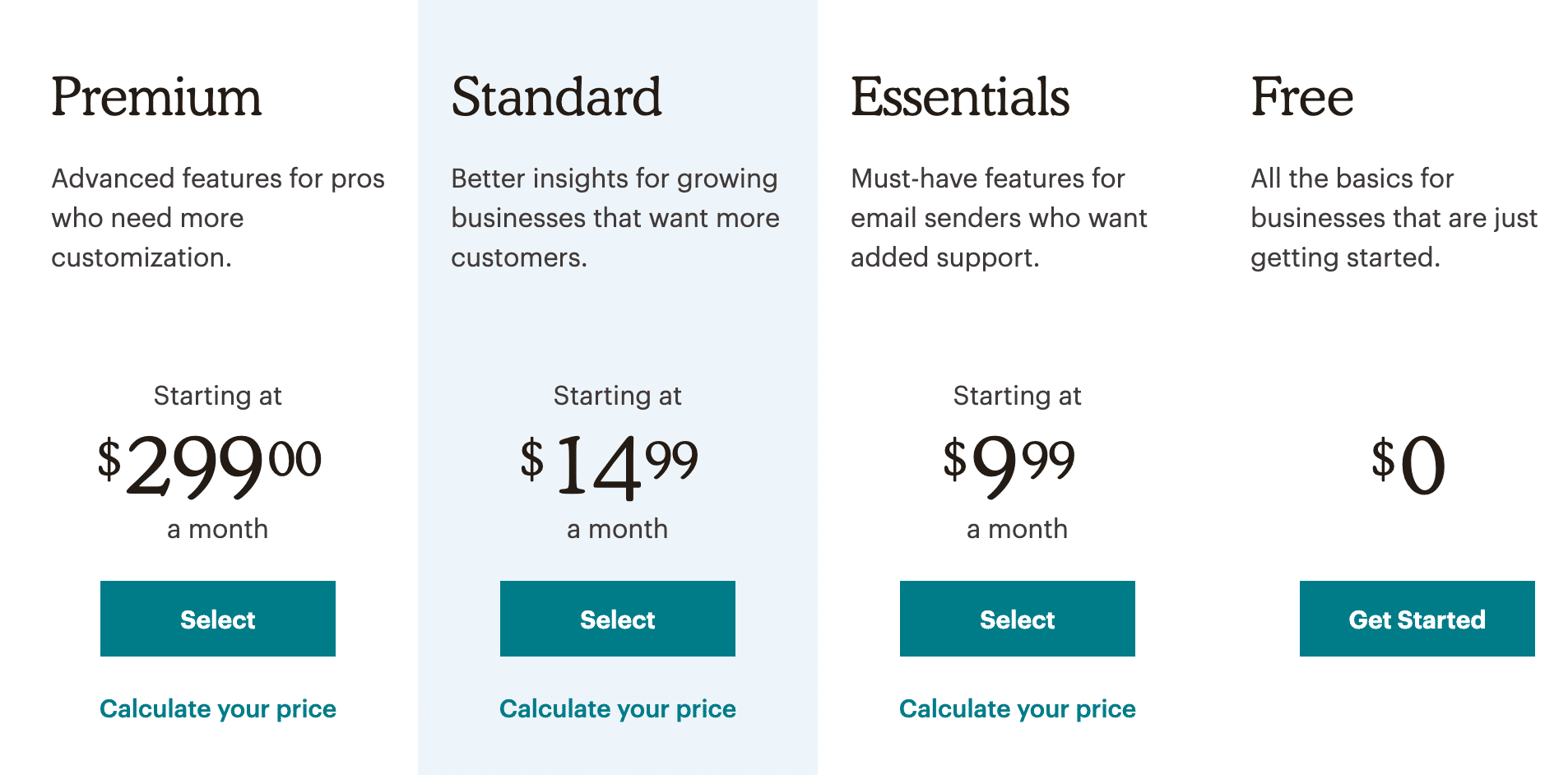
Cons of Mailchimp
It’s a Generic Email Marketing Software
Mailchimp’s target audience appears to be anyone and everyone who wants to build an email list.
And they are doing the whole casting a wide net thing really well. It doesn’t matter whether you are a hobbyist, an online creator, or an ecommerce entrepreneur, Mailchimp has got you covered.
However, serving such a broad target audience means that while it is an okay solution, it is not necessarily the best solution for your niche.
For example, if you are a hobbyist that only needs the most basic email marketing functionality, then MoonMail might be a better option.
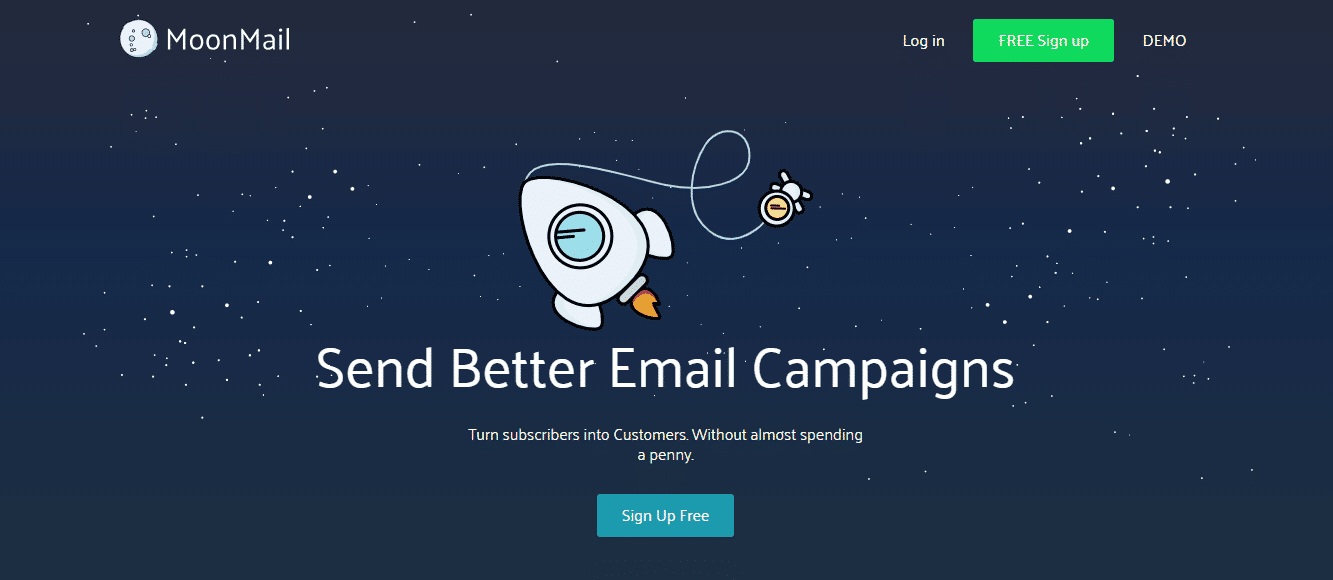
Meanwhile, if you are an online creator, then ConvertKit was built with you in mind, and their mission is to help creators earn a living online.
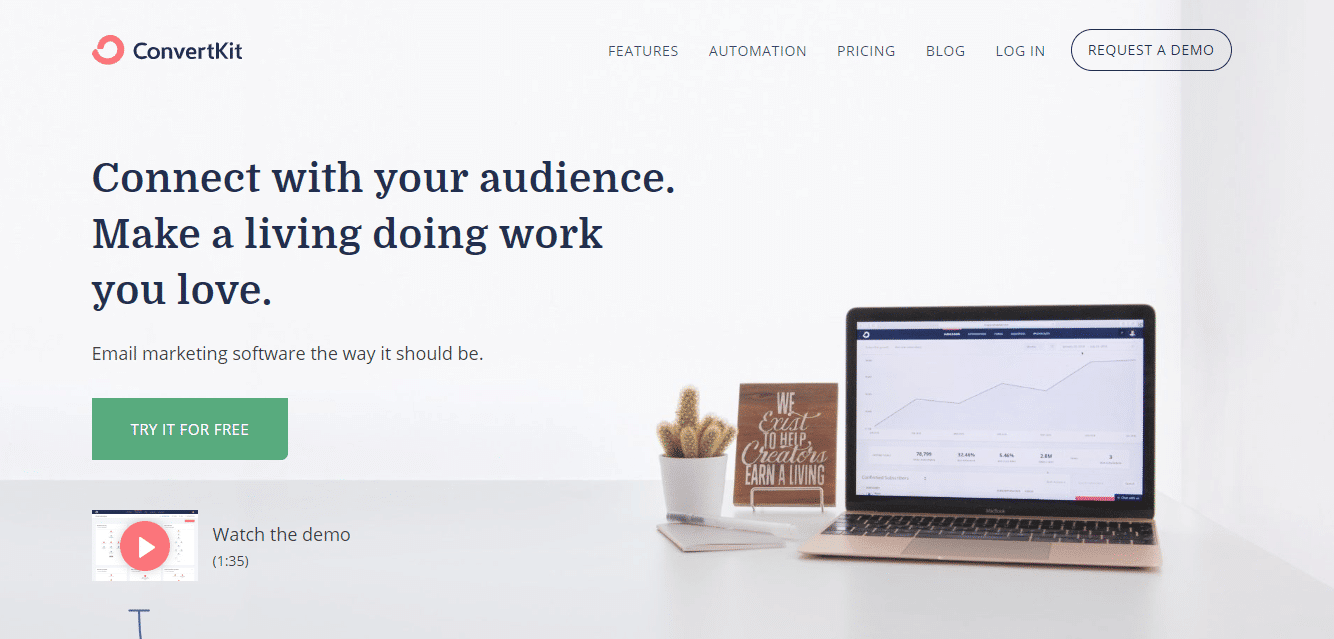
And if you have an ecommerce business, then you might want to check out SmartrMail or Drip:
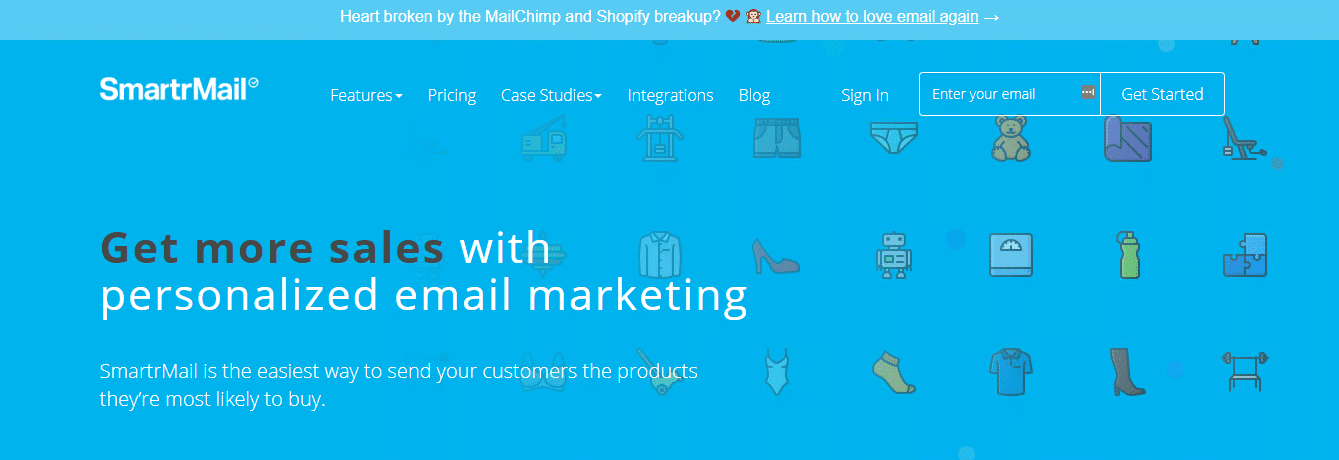
So you need to see whether it makes sense to go with Mailchimp when there are niche options available.
While You Can Start for Free with Mailchimp, It Can Get Expensive as Your List Grows
Mailchimp is free up to 2,000 subscribers, but how much does it cost after that?
You can use the cost calculator on their pricing page to work out how much you’d have to pay once you reach a specific number of subscribers.
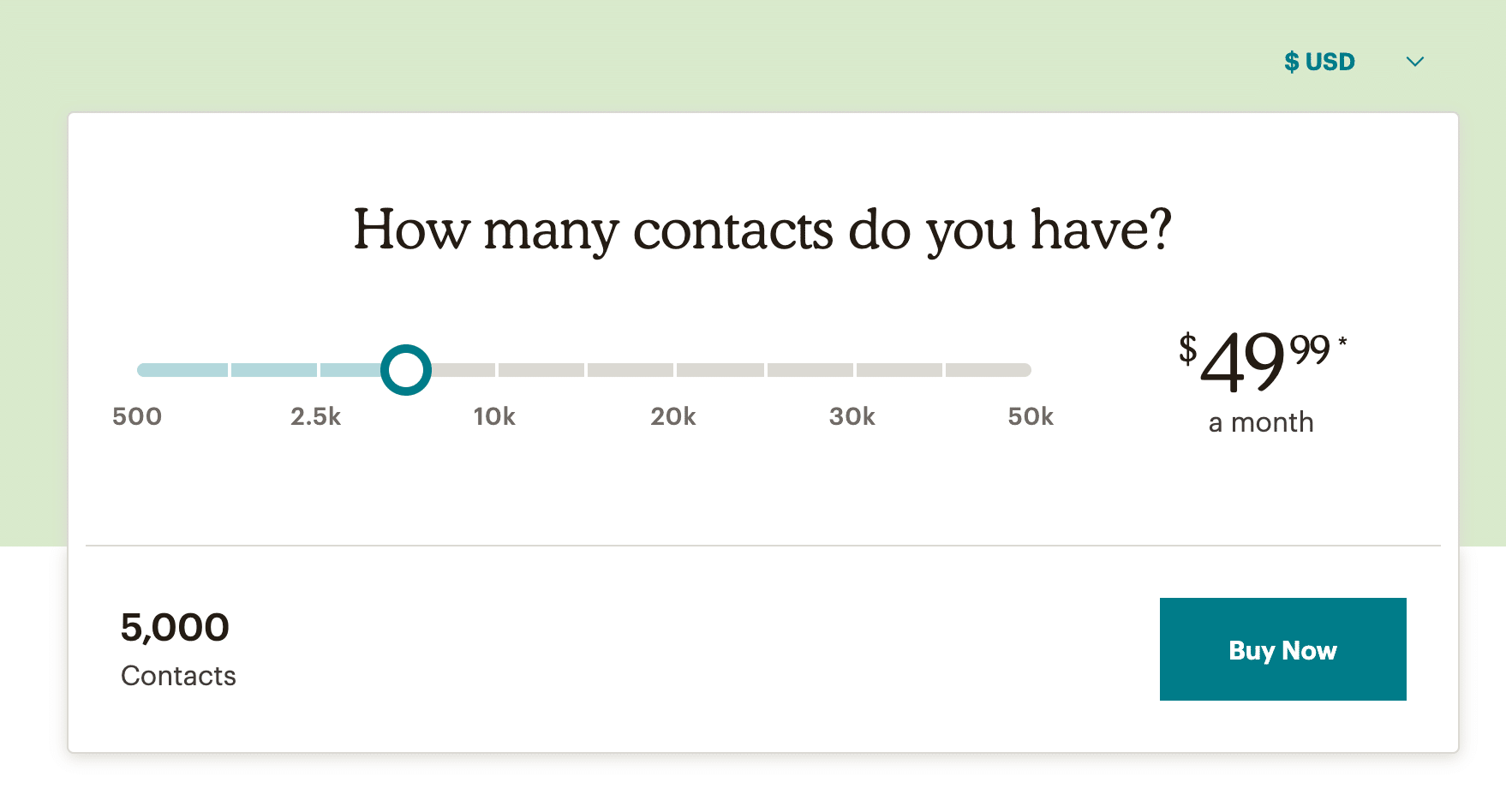
Mailchimp has drawn criticism over their pricing which some people consider to be unfair.
For example, the bootstrapping star Pieter Levels switched from Mailchimp to SendGrind in 2017:
His main reason for switching was that Mailchimp was charging him $250/month which he called “predatory”:
However, to be fair to Mailchimp, their pricing isn’t that outrageous when compared to some of their competitors but it’s still something to keep in mind if the price is an issue to you.
Source: mailchimp.com, salesflare.com

